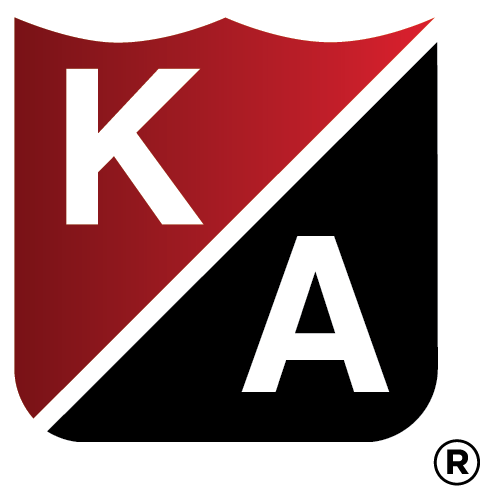Professional liability insurance is a necessary business expense. The professional liability policy provides the design professional with a sense of financial security against errors and omissions.
The policy also provides project owners and contractors with a level of comfort that a “deep pocket” will be available for any additional project costs caused by professional negligence. Too often project professionals, owners and contractors consider the purchase of the professional policy to be sufficient for ensuring negligence coverage.
In The University of Pittsburgh, et al v. Lexington Insurance Company, et al, No 1:2013cv00335 (S.D.N.Y. 2016), the U.S. District Court for the Southern District of New York recently issued two rulings barring professional liability coverage from attaching to a claim for damages. Lexington Insurance Company (“Lexington”) issued a claims-made professional liability policy to an architectural firm known as The Ballinger Company (“Ballinger”). Subsequent to the expiration of the Lexington policy, Ballinger secured a claims-made professional liability policy from Axis Insurance Company (“Axis”).
In 2008 Ballinger was retained by the University of Pittsburgh to design an addition to Salk Hall, a well-known on-campus art deco structure. The project general contractor was Burchick Construction Co.
(“Burchick”). Burchick notified the University of Pittsburgh in 2011 that it may sue the university as a result of cost overruns and delays. The university advised Ballinger of Burchick’s notice. On January 31, 2012, a day before the Lexington policy was to expire, Ballinger advised Lexington that “problems and delays” existed on the project. Burchick filed suit nine (9) months later.
Lexington denied coverage for the claims arising from the Salk Hall project. Lexington asserted that Ballinger failed to comply with various policy provisions including the reporting of circumstances and claims. Ballinger’s notice that project “problems and delays” existed was not sufficient to trigger coverage under policy. The Court agreed with Lexington. The Court ruled that Ballinger’s notice was too ambiguous and therefore was deficient in meeting policy circumstance and claim reporting requirements.
After the Court ruled in favor of Lexington, Axis brought a motion to confirm that it was also not obligated to provide coverage. The Court, in a separate decision, ruled that Ballinger’s notice of circumstance to Lexington indicated that Ballinger had a reasonable expectation that a claim would arise from the “problems and delays” incurring on the project. While Ballinger’s notice was not sufficient to trigger Lexington policy coverage, the Court stated it was sufficient enough to create a “reasonable expectation” by Ballinger that a claim existed prior to the issuance of the Axis policy. Claims or potential claim situations existing prior to the issuance of a claims-made policy are typically excluded from coverage under that policy. The Court found this to be the situation in this case.
In addition to being a tough law school exam question, this case highlights the importance of knowing all terms and conditions of a professional liability policy, especially those that could affect coverage. Professional liability carriers are not in the business of collecting premiums and denying coverage. Terms and conditions, such as reporting procedures, are contained in a policy to protect the carrier from being placed in a position of being unable to properly defend the design professional and itself in a circumstance or claim situation. For example, a failure to report a claim in a timely manner may prevent a carrier from mitigating damages. Also, an untimely or improper notice may cause evidence to be compromised, lost or unavailable, thereby prejudicing the carrier’s ability to defend its insured as well as itself. Therefore, it is important that design professionals know their policy’s obligations and take those steps necessary to comply with them.
When it comes to reporting circumstances or claims, the design professional needs to comply with all aspects of the reporting requirements of the policy. The design professional should not hesitate in reporting a circumstance or claim. Even if it does not look like a circumstance will be become a claim, it should be promptly reported to the professional liability policy carrier. A good carrier will not count circumstance reporting against the design professional at the time of renewal. Early and often circumstance reporting will be seen by a good carrier as the sign of a partner that is concerned about avoiding, mitigating and resolving claims.
In addition to complying with the policy’s reporting requirements the design professional should obtain written confirmation from the carrier that the notice was received and when. The design professional should ask the carrier if it has sufficient information in order to evaluate the circumstance or claim. And finally, the design professional should cooperate fully with the carrier in obtaining additional information or taking specific action requested by the carrier.
Understanding and conforming to policy terms and conditions is as important as obtaining professional liability coverage. The failure to comply with policy terms and conditions, such as in The University of Pittsburgh, et al v. Lexington Insurance Company, et al can result in a design professional having to pay more than just its policy deductible in defending a claim and paying awarded damages. It can also leave injured parties without sufficient financial recourse.
by Bruce Demeter
Bruce is the developer and manager of professional liability insurance programs and an expert in risk exposure avoidance, assessment and resolution. In his career he has been a Construction Manager and the co-founder of a construction industry litigation law firm. Bruce has published articles on the construction industry and has been a featured speaker at many national association and organization meetings. He has developed course work on reviewing contracts, protecting contract rights, and avoiding risk. He authors the AIC “Mr. Ethics” column. Bruce holds a J.D. from Rutgers School of Law with Honors as well as a MA and BA with Honors from the University of Delaware where he was also a member of the Political Science faculty. Bruce can be reached at [email protected].
This information is provided as a service of a/e ProNet, an international association of independent insurance brokers dedicated to serving the design profession since 1988. We are dedicated to representing the best interests of our design clients as a trusted and impartial source of information on professional liability insurance, risk management, loss prevention and continuing education. Please visit our website www.aepronet.org for additional information
Nothing contained within this article should be considered legal advice. Anyone who reads this article should consult with an attorney before acting on anything contained in this or any other article on legal matters, as facts and circumstances will vary from case to case.



